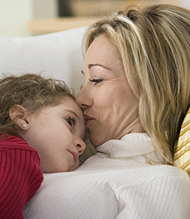
At every age and stage, children are affected by what’s happening in the news, whether parents share this information or shield them from it — because the news is everywhere.
According to a Kaiser Family Foundation Study, today’s families are watching a lot of TV. 65% of today’s children live in homes where the TV is on half the time, and in 36% of homes, the TV is on all the time. This study also points to research stating that TV in the background has an impact on children because “the content is not designed for them.”
How many hours a day children are watching the news has not been definitively researched, but news exposure is clearly having an impact. Even if parents keep the TV news off around young children (as experts recommend) the news can still be seen at the supermarket, in a doctor’s waiting room, or at a friend’s house. Therefore it’s not surprising that teachers are reporting that children as young as five are talking about the news — and see news events reflected in their play at school.
Because the news has saturated our daily lives, experts recommend you develop age-appropriate ways to talk about it with kids. While these conversations will be somewhat limited with younger children, experts recommend that you discuss the news in a more detailed way with older children. To help out, this article offers age-customized pointers for discussing the news with suggestions on how much (or how little) news they should be watching.
“One of the most important things for healthy development is for children to feel safe and secure. Violent images in the news can scare children even if they are far away, and undermine their sense of well-being. Therefore it’s important to protect young children as much as possible from these images and keep TV news off. If young children are exposed, remind them that they are safe at home and provide concrete examples using age-appropriate terms that will be understood. You might explain that a hurricane is thousands of miles away and show that on a map. You could show how you lock the doors to stay safe from burglars. You could remind her that you wear a seatbelt to keep her safe in the car. Tangible discussions will help your child calm down and feel secure.”
Diane Levin, Ph.D.
Professor of Education, Wheelock College. Co-Author, The War Play Dilemma.